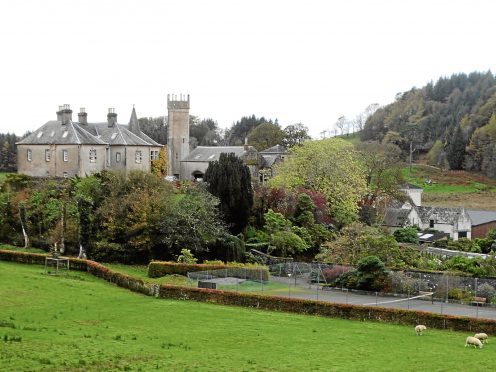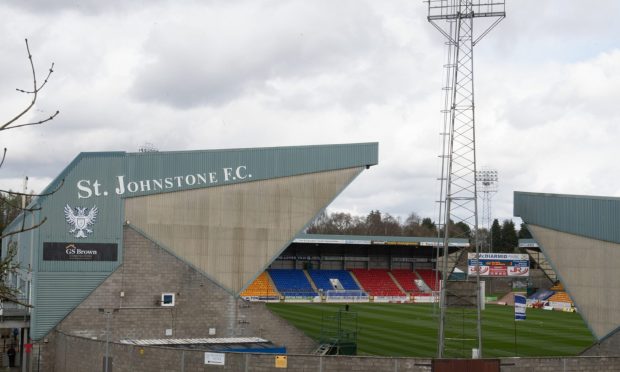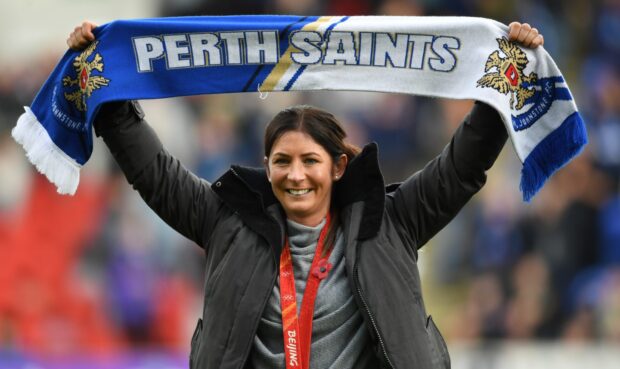We woke up on Monday to our first frosted grass, frozen windscreen morning of autumn and by the time Inka and I went out for the early walk the clouds had rolled away and the sun was shining in a cornflower blue sky.
Inka always enjoys these mornings and, although his 10th birthday is this month, he romped off round the field like a youngster half his age. For me, it was the ragged chevron of geese high in the sky, heading up The Mearns and coffee-shopping among themselves – their cryin’ voices trailed ahint them on the air, as the poet wrote.
We are back from a break on the west coast where we had joined daughter Cait and her husband Gibson in a cottage on Loch Melfort-side, 16 miles below Oban. Some families enjoy visiting new places every year; we like the familiarity of a part of the country we have holidayed in for more than 30 years.
We were in the ancient district of Lorne (old spelling Lorn) whose history goes back to the Neolithic settlers of at least 5,000 years ago. The landscape bears the footprint of the stirrings of Christianity in Scotland associated with Dunadd and the ancient kingdom of Dalriada. Contrast that with the Bronze Age tombs, stone circles and rock carvings of Kilmartin Glen. The Viking invasions of the 10th and 11th centuries left their mark, too, often in the legacy of the Norse suffix nish – a nose or point – to place names, hence Craignish and Taynish.
We were too late for the best of the Scottish fall, as the trees were starting to lose their leaves, but the hot reds, ochres, yellows and every shade of brown were reminders of previous holidays taken even just a week earlier.
Flying fish
Cait and Gibson’s cottage is part of the holiday complex at Melfort which was developed from the abandoned buildings of an old gunpowder factory. A biblical-style phenomenon occurred there in 1821 when a shower of herring rained down on the estate.
It caused consternation locally at the time, as such an event had never been recorded before. It is thought now that the fish got caught up in a waterspout which ran out of energy when it got over land and deposited its unlikely contents. But the incident was the inspiration for the local “Shower of Herring” restaurant.
We’d pencilled in a return visit to Ardmaddy Castle gardens. The castle sits at the head of a bay in a horseshoe of protective hills and woodlands, looking down the Sound of Seil to the islands of Shuna and Luing.
Scotland’s west coast benefits from the benign influence of the Gulf Stream and Ardmaddy gardens – in common with other Argyll gardens we have visited, Crarae, Arduaine (pronounced Ardooannie) and Inveraray – is known for its azaleas and rhododendrons, climbing plants and herbaceous perennials.
The best of the flowers were past but we spent a sunny afternoon enjoying the formal walled gardens and followed the woodland walk to the little dog cemetery. The gravestones are weathered and covered in moss and lichen and the only name we could recognise was Bobbie, but they were all much-loved pets.
The castle dates back to the 15th Century and, in the best traditions of old Scottish castles, has been burnt down and rebuilt, changed hands on a number of occasions and is reputed to have been a Jacobite prison after the 1745 uprising. An unexpected addition is the elaborate Victorian octagonal tower built in 1862 and somewhat at odds, architecturally, with the older building.
Living history
The history of Scotland is the history of the people and people have lived and worked in the Lorne district for thousands of years, shaping the landscape we see today. They have left us their stories, some of which we can only guess at, in their impressive artefacts, carved gravestones (survivors of the Viking raiders), pre-clearance villages and lazy-beds, the old Highland method of cultivation, and more.
We forget that in earlier centuries much travel was by sea. Get off the beaten track and there are a thousand years of maritime history to explore along a remote coastline. When you are in Lorne you’re travelling back in history and time into one of Scotland’s oldest landscapes, with a diverse natural history. There’s saltmarsh, peat bog, native oak woods and hills, each of which is home to an astonishing variety of plants, insects, birds and mammals.
Over the years we’ve seen an abundance of the indigenous wildlife but there have been special moments crossing paths with otters and pine martens and red squirrels. The special moment this time was watching a young sea eagle which had probably come from Ardmaddy, five miles away across the hill, where they bred this year.
We had a restful three days with our daughter and son-in-law (who we see too little of), with no responsibilities – we were the guests this time – and freedom from the tyranny of the mobile phone. I’m sure you understand why we keep on going back.










